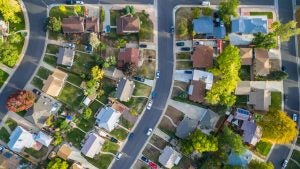 California is continuing its leadership on climate change by eliminating carbon from the economy and our daily lives. In fact, California has a law to create a carbon neutral electric grid by 2045.
California is continuing its leadership on climate change by eliminating carbon from the economy and our daily lives. In fact, California has a law to create a carbon neutral electric grid by 2045.
This spring, our state took two important steps to support these efforts.
Decarbonizing our buildings
Approximately 25% of the state’s greenhouse gas emissions come from residential buildings. Because these buildings come in all different shapes and sizes, we need different strategies to reduce their emissions.
California set aside $200 million dollars to fund two new pilot projects designed to decarbonize buildings.
- For new residential construction projects, California created the Building Initiative for Low Emissions Development pilot program.
- For existing buildings with fossil gas technologies, it created the Technology and Equipment for Clean Heating pilot program.
Since most residential customers do not care when their water gets heated or when their space heater engages, the TECH program will focus on deploying grid-enabled appliances (appliances that can turn on and off based on energy demand). California will work directly with appliance manufacturers, contractors and vendors, and will engage in direct outreach to customers. Their focus will be on making new appliances market ready and establishing incentives for replacing older appliances.
These two programs will help California reach its carbon-neutral goals Share on XSince the TECH program will facilitate customers leaving the natural gas system, the commission also ordered the state’s natural gas utilities to release maps of where the gas distribution assets are located. These recommendations came directly from EDF’s Stranded Assets report released last year. The idea here is to minimize bill impact and maximize societal value of electrifying our residential space and water heating.
As shown in a recent E3 report, electrification strategies such as the BUILD and TECH programs are two cost-effective ways to decarbonize a building. Both programs provide additional advantages by allocating 30% of their efforts to lower-income and disadvantaged communities — further helping to ensure an equitable transition to a carbon-neutral economy.
For technical and economic reasons, there are some buildings that cannot be fully electrified. To help address this problem, EDF has been working with Southern California Gas and San Diego Gas & Electric to provide options for customers to switch to bio gas. This agreement is now pending approval, but if it is adopted, it will be another way for customers to decarbonize where they live and work.
Other ways to go green
Switching our appliances from gas to electric will have important implications for our electricity providers. These providers face a unique challenge as they must ensure they are meeting the state’s emissions targets while also ensuring grid reliability.
Fortunately, in addition to funding these pilot programs for building electrification, the state is also making plans that will ensure a cleaner, more stable electric grid. These plans will result in some major changes in California’s electric portfolio.
The plans will result in approximately 25,000 megawatts of new generation over the next decade, featuring:
- 11,000 MW of utility scale solar photovoltaic (which is more than CA has built to date).
- 8,900 of new short-duration battery storage (eight times more than the national standard).
- 1,000 MW of long-duration storage
- 3,400 utility scale wind, with emphasis on off-shore wind.
- Other clean firm fuel supplies, such as geothermal.
California continues to be on the leading edge of decarbonizing our economy. And EDF has and will continue to advocate for new strategies that accelerate decarbonization of the electric supply and the state’s buildings and transportation sectors in affordable and reliable ways.










